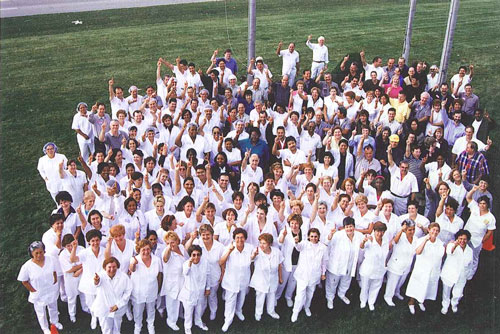The power behind a FIT team is loyalty towards your fellow team members and to your personal values. These values are a cornerstone to your life’s purpose and by respecting the values of your FIT team–you create an environment that brings greater meaning to their roles within the organization.

In the early days of my career with Nabisco, Sunshine Biscuit put their manufacturing plant on the market. Sunshine Biscuit was our number three competitor in the industry and was selling their facility in Niles, a suburb of Chicago. I informed the senior leadership at Nabisco of the opportunity and provided my rationale for why they should consider buying it. They supported my recommendation and acquired the facility.
Then the senior vice president of manufacturing, who was my internal mentor, suggested I lead this new plant. I was looking for a better FIT in my new job, so I created one where my passion for people could be leveraged. Some of the best advice to anyone feeling stuck in their job is not to look for something new, but rather to invent it.
At the time, Nabisco didn’t make any products outside its own brand. I helped change that as Nabisco acquired not only the Niles plant property and equipment but the people who ran its facility. A considerable investment was made in the first year after acquisition to align the plant to Nabisco’s brand standards for manufacturing products. I negotiated an agreement between the seller and Nabisco to allow a seamless transition of ownership from Sunshine Biscuits to Nabisco. We made products for Sunshine under the Sunshine and Salerno brands as we readied the plant for Nabisco-branded products.It was here that I learned one of the greatest lessons about the power of FIT teams and how, as leaders, we should carefully steward this role. Mr. Salerno, the original owner of the facility, understood that a loyal Italian community was part of the plant’s culture. The existing employees were an important part of the sale but what had we done to ensure their culture was being preserved? What could I personally do to honor and build upon the sense of pride and ownership these employees had in their company?
In the first year of ownership, one sizable undertaking was to bring the plant up to Nabisco standards for product manufacturing. The process of commercializing Nabisco’s oatmeal cookies demanded numerous studies and test runs to ensure the highest level of quality. One such test run was underway when I heard shouting at the end of the packaging line between two female employees. The women were visibly upset and yelling in Italian with exaggerated hand gestures and body language.
With the help of an area supervisor named Maria, we interpreted the women’s concerns. The women were related to one another, and this communication style was not atypical for how they interacted both at work and in their Italian homes. The women’s conflict was caused by an unexpected clash of cultures in the workplace. Nabisco maintained more rigorous standards in commercializing product than the previous owners had held and the women’s value of frugality was disrupted by Nabisco’s capability studies. The female associates thought the study was wasteful and saw no reason for standing by as they watched cookies fall off the end of the conveyor belt without being packaged for sale. In many ways, they were right. There was absolutely nothing wrong with the product; it met all the exacting process and post-process specifications. But we had to make certain this process was capable, repeatable, and dependable. The female associates were passionate about their job, and would rather package cookies for a consumer than stand by with nothing to do.
The female associates took pride in their product. They weren’t just members of a team, but a family. A process they had championed was transforming before their eyes without an explanation, and they feared losing a unique culture they created. They feared losing their FIT.
One morning, our baking team asked us to join them for some kind of ceremony. We found the staff gathered in front of the facility, dressed from head to toe in white bakery attire, hair nets, bump caps and all. One woman carried a shovel in her hands. I wondered: Were they bucking the Nabisco way already and burying the new management on the spot?
The employee buried a two-foot statue of Saint Joseph, the patron saint of workers, in a flower bed in front of the office for good luck. Catholics appealed to this saint for favor when selling something of personal value. By tradition, the new owners would help them find and exhume the buried saint. Together with my mentor and boss, Tony, I spent the next hour digging holes in the front of the plant in search of our good luck. We finally uncovered it, extracted it from the ground, brushed off the dirt, and placed it on a mantel in the main office. Saint Joseph became our FIT mascot. Tony and I laughed a lot that morning; we felt honored that the employees thought to welcome us with this important tradition.
I learned that the culture was not simply an attribute but also a great strength that united this Fully Integrated Team. Culture is important because it lends the employee a sense of place at work. This sense of place ensures people will take ownership of their own success when satisfied with their company’s culture. Strong organizational culture fuels a Fully Integrated Team. A new leader who aspires to change this will not succeed without respect for the preexisting culture. Many new leaders don’t understand this and fail to gain the trust and respect of their team.






